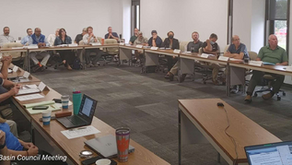Observed in Practice: 5 Reasons for Choosing a New Enterprise Asset Management System
- JD Solomon

- Jan 7, 2022
- 2 min read

Organizations change their Enterprise Asset Management System (EAMS) or Computerized Maintenance Management System (CMMS) many reasons. The Top 5 reasons provided are not necessarily good reasons, at least in theory, but are the real reasons based on 20 years in the business.
5. The new software is cheap (or “free”). Most organizations have wised up to the fact that it costs approximately 6 to 10 times the software cost to implement a new system. However, "cheap" is still a common reason for changing.
4. The current software does not do what we need it to do. There are a lot of sub-reasons with this one. While there is still a lot of truth that some products are better in specific industries or with certain functionalities, there are many subjective preferences associated with this one.
3. We have had bad customer support. These days, this one is as much part of the regional support team rather than national or global product support programs. It is a good one for making a switch.
2. The current software is not common in this region. Another common reason for switching is that everyone wants a local user group and a pool of potential new human resources.
1. Everyone has turned sour on the existing system. Most of the major EAMS/CMMS products can do what you need them to do, at least with enough time and money, because all of the products are relational databases. However, there are many times situations turn so bad that there just needs to be a change in chemistry between users and the software.
Again, these are not necessarily good or bad. The reasons just are. The good news is that structured evaluation systems and formal business case evaluations (BCEs) can be performed to sort through the issues objectively.
JD Solomon, Inc provides reliability and risk management services for facilities and infrastructure. Contact us for more information about our six-step EAMS/CMMS assessment, reliability & maintenance process improvements, and data management practices to enable quantitative risk analysis.










Kommentarer